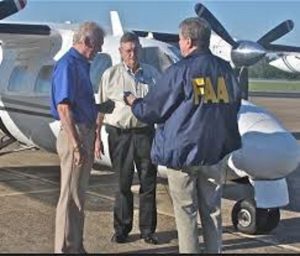Do you operate a “large civil aircraft,” as defined in federal aviation regulations (“FAR”) Section 1.1 (12,500 pounds, maximum certificated takeoff weight – think King Air 350 or larger or most business jets), and you do not own that aircraft but have the owner’s permission or consent to use the aircraft? If so, you may be required to comply with the truth in leasing (“TIL”) requirements contained in FAR § 91.23.
Does FAR § 91.23 Apply?
How do you know that your right to use the non-owned aircraft qualifies as a “lease” for TIL purposes? Well, the regulation states that “a lease means any agreement by a person to furnish an aircraft to another person for compensation or hire, whether with or without flight crewmembers, other than an agreement for the sale of an aircraft and a contract of conditional sale…”
So, whether the agreement you have with the aircraft owner for use of the aircraft is characterized or titled as a “lease,” a “license,” an “operating agreement,” or something else, if it falls within the regulation’s definition your arrangement will be considered a lease. In that situation, the Federal Aviation Administration (“FAA”) will refer to whoever is providing the aircraft as “the lessor,” and it will refer to the person to whom the aircraft is furnished as “the lessee.”
 Interestingly, the regulation can apply to a “wet lease” where a person agrees to provide an entire aircraft and at least one crewmember, or a dry lease arrangement, where the aircraft is provided to the lessee without crew. However, most leasing arrangements subject to TIL are dry leases with operations conducted under FAR Part 91.
Interestingly, the regulation can apply to a “wet lease” where a person agrees to provide an entire aircraft and at least one crewmember, or a dry lease arrangement, where the aircraft is provided to the lessee without crew. However, most leasing arrangements subject to TIL are dry leases with operations conducted under FAR Part 91.
What Does FAR § 91.23 Require?
A Written Lease. The lease must be in writing. And immediately preceding the space for the parties’ signatures, the lease must contain a “truth-in-leasing clause” in large print, which includes the following information for the leased aircraft:
-
Identification of the FAR under which the aircraft has been maintained and inspected during the twelve (12) months preceding the signing of the lease (e.g. Part 91 or 135), and certification by the parties thereto regarding the aircraft’s status of compliance with applicable maintenance and inspection requirements for the flights to be conducted under the lease;
-
The name, address, and signature of the person responsible for operational control of the aircraft under the lease, and certification that each person understands that person’s responsibilities for compliance with applicable FARs; and
-
A statement that an explanation of factors bearing on operational control and pertinent FARs can be obtained from the responsible Flight Standards Office.
Mailing to the FAA Technical Branch. The lessee must mail a copy of the lease to the FAA’s Technical Branch in Oklahoma City within twenty-four (24) hours of signing. A copy of the lease must also be carried in the aircraft when it is operated by the lessee and presented for review by the FAA upon request.
Notice to the Flight Standards District Office. And at least forty-eight (48) hours before the first flight under the lease, the lessee must provide a notice to the Flight Standards District Office responsible for the departure airport containing the following information:
-
The location of the airport of departure;
-
The departure time; and
-
The registration number of the aircraft involved.



